[This is a brief but marvelous and uplifting account of the history, philosophy and aims of the Hitler-Jugend (Hitler Youth) movement that flourished under National Socialism. One of its aims was to further world peace by getting the youth of all nations to communicate in friendship and trust. Disastrously for humanity, it and National Socialism was crushed by the evil power of Organized jewry
— KATANA.]
PART 1
YOUTH ON THE TRAMP
GERMAN YOUTH IN A
CHANGING WORLD
BERLIN
TERRAMARE OFFICE
FOURTH EDITION
1936
Published by the Terramare Office, Kronenstraase 1, Berlin W 8
Printed by the Terramare Press, Dresdener Strasse 43, Berlin SW 19
Printed in Germany
CONTENTS
GERMAN YOUTH IN A CHANGING WORLD
The Youth Movement
Max Kommerell . . . . . . . . . . . . . . . . . . . . . . . . . . . . . . . 7
Youth
Eduard Wechssler . . . . . . . . . . . . . . . . . . . . . . . . . . . . . . 9
In Memory of German Youth . . . . . . . . . . . . . . . . . . . . . . 10
Hitler-Jugend
Franz Otto Wrede . . . . . . . . . . . . . . . . . . . . . . . . . . . . . 12
Youth Hostels in Germany . . . . . . . . . . . . . . . . . . . . . . . . . 21
Interchange between the Youth
Baldur von Schirach . . . . . . . . . . . . . . . . . . . . . . . . . . . . 27
The Wandering Scholars . . . . . . . . . . . . . . . . . . . . . . . . . . 29
Leadership of German Youth
Rudolf Apel . . . . . . . . . . . . . . . . . . . . . . . . . . . . . . . . . . . 32
Reichsberufswettkampf . . . . . . . . . . . . . . . . . . . . . . .. . . . . 36
Labour Service
Muller-Brandenburg . . . . . . . . . . . . . . . . . . . . . . . . . . . . . 38
Olympic Games Berlin 1936
Carl Diem . . . . . . . . . . . . , . . . . . . . . . . . . . . . . . . . . . . . . . . . 44
[Page 6]
THE YOUTH MOVEMENT
THE Youth Movement is so essentially German that it would be justifiable to typify the Germans as the people with a youth movement, or, to go still further, the people which has always had a youth movement and which will ever have one, so long as we mean thereby an active and independent spirit among the rising generation.
NOVALIS
Frederick Leopold von Hardenberg
[Page 7]
In the middle of the eighteenth century, Klopstock founded our hymnal poetry at the age of 24. In Herder’s sick-room at Strassburg a youth of 26 kindled the spirit of another of 21 (Goethe) and the latter thereafter that of his comrades and contemporaries. Schiller was scarcely 30 when, under the double influence of his education and his time, he proclaimed rebellion sacred and read aloud his “Robbers” to his fellows. His example was followed by the three scholars, Holderlln, Schelling and Hegel, who secretly acknowledged the ev xai zav and danced about the Tree of Freedom. Moreover, that most effective spiritual movement which after the classic epoch consciously wore the colours of youth, was initiated by two youths Friedrich Schlegel and Novalis.
Max Kommerell
JOSEPH VON EICHENDORFF
“For our youth there is no ease of carefree play, no blithe immunity; the quest of life engages it early. We come to birth in the midst of struggle and in the midst of struggle, vanquished or victorious, we decline.”
From the novel … Ahnung Gegenwart, 1812
[Page 8]
YOUTH
EVERYWHERE violent complaints can be heard and read against young people. It is said that they are sceptical, refractory and lacking in respect. It is true that they never showed less trusting confidence in their parents and teachers. But is this really, as is so often claimed, the children’s fault? Instead, is it not the inevitable result of the prevailing insecurity, a lack of faith, which in this age of the League of Nations, the Peace Pact, Disarmament, and Diplomacy, seems to cling to all high-sounding promises and assurances? If, today, young people refuse to believe their elders so blindly, is this not because the innate truthfulness of these young people rebels against the abuse of sacred promises?
Mistrust of any kind of authority may harbour the profound and true intuition that sacred responsibilities and high sounding promises demand actions as well. Do these young people perhaps feel that the extravagant use of long respected names at exhibitions, banquets, club meetings and professional congresses will be bitterly revenged on the speakers and their peoples? Is it not possible that youth’s refractory spirit conceals a secret will to realise truth and to hold to it in the future?
Every young man or woman, who has a character that must develop in its own way, should be more valuable to us than coal or iron or any of our other raw materials in Germany. For these young people will, one day, be chiefly responsible for the decision as to how our natural products will be used. Talented youth is more precious and worthwhile cultivating than any of the few properties left us. These young people must and will one day mould Germany’s history. And this youth should be sacred to us.
Eduard Wechssler
[Page 9]
WAR MEMORIAL BY THORMAEHLEN
IN THE CONVENT CLOISTER AT MAGDEBURG
IN MEMORY OF GERMAN YOUTHS
KILLED IN ACTION 1914-1918
THE YOUNG GENERATION IN GERMANY
THE HITLER-JUGEND
The young generation in Germany today is so self-reliant, so willing and so trustful that it would be a crime on the part of the war generation not to hand over generously to the youth everything which the latter has the right to demand by reason of the struggle which it has waged for the establishment of a new attitude towards life.
Werner Brumelburg
To understand the origin and rise of National Socialism we must always bear in mind the fact that its founders were soldiers who had fought in the world war. The life that they led in the trenches was the source from which the inspiration and driving force of the new movement came. The new outlook on life sprang from those war experiences, and also the new conception of the relations that should exist on the part of the people towards the nation and towards one another.
In the same way the German youth of today can he understood only through its relation to National Socialism. Even before the war there was a Youth Movement in Germany; but the movement of today is different, because it is an integral part of National Socialism. The young generation was an essential factor among the forces that brought National Socialism to power. In the fighting period of the movement 21 youngsters, between the ages of 15 and 18, lost their lives in the service of the cause. They were members of the organisation which is called the Hitler-Jugend.
The Hitler-Jugend is an organisation that arose spontaneously from the members of the young generation who wished to place themselves at the service of the National Socialist Party.
[Page 12]
Thereupon it received its name as an individual National Socialist organisation. In October, 1932 100,000 boys and girls assembled in Potsdam, on the occasion of the first German congress of the Hitler-Jugend, to parade before the Fuehrer, Adolph Hitler. In that demonstration an example was given which had eloquent significance for anybody with eyes to see.
[Page 13]
This congress was the prologue to the events which, began on January 30th, 1933, After the accession of the National Socialists to power, millions of German boys and girls flocked to the Hitler-Jugend which today has a membership of six millions — the largest youth organisation in the world. These came from the various youth groups of the old regime, which had been organised an different units according to different political affiliations, different classes and different religious denominations. The former youth organisations became extinct and the youth of the country joined in one national organisation in the Hitler-Jugend, which thus furnished a guarantee for the consolidation and continuance of the new State among the generations of the future. Baldur von Schirach, who had hitherto been the Reich leader of the Hitler-Jugend was now appointed by Adolf Hitler as supreme leader of all the German youth.
[Page 14]
The Hitler-Jugend stands for a new type of German youth and therewith we have a new type of German manhood in process of formation. In contradistinction to the former leagues of youth, this Hitler-Jugend is not romantic and does not try to escape from the realities of life but prefers rather to face them openly and master them.
It is true that they love their country excursions, just as the others did. They are attracted to the tent and the campfire. They sing the old German folk songs and indeed have once again brought to public recognition a whole treasury of these songs which hitherto had lain neglected in the folk memory. But they do not remain entirely in the past. They also sing songs which they themselves have composed, the theme of which is part of their own experiences. These young people are creative in the highest degree. Within the past three years they have produced a group of new songs which are of recognised artistic merit.
[Page 15]
And just as they are endeavouring to introduce a new style an the domain of art, so too they are endeavouring to develop a new style of life for the German people. They are well informed on the political situation in Germany and in the world around them. For the first time in Germany, after a long 2,000 years, there is at last a whole generation of politically minded people. They have achieved success in establishing friendly relations with the youth of other countries; because, just like the youth elsewhere, they are determined to maintain peace in Europe and throughout the world.
Indeed, it may be said that their contribution to this noble purpose is a very valuable one. From all this it is clear that in all departments of life, in culture and in art, in the social order and in politics, they represent a definitely creative force. But they recognise very clearly that, in order to have their forces and their practical capabilities properly organised a strong leadership is necessary, so that their striving to work for this one ideal, which is Germany, will have its best effects. For that reason they formed themselves into a solid phalanx under the leadership of Adolf Hitler, and through their own leader they have declared that outside the Hitler-Jugend any other league of youth will be opposed by the spirit of the community, which is the spirit of the State.
The distinguishing feature of this youth organisation, which differentiates it from all other youth organisations in the world, lies in the fact that it is specifically an organisation in support of the State. Other youth organisations like the Italian Balilla were founded under the patronage of the State; but here we have a youth organisation which was founded when the State did not exist, the purpose of which was to furnish a basis on which the State could be founded.
[Page 16]
The German youth of today has adopted a principle which is peculiar to itself and which Adolf Hitler has expressed in the phrase:
“Youth must be led by youth.”
Therefore their leaders are chosen by a system of promotion from the leadership of one group to another within the organisation.
[Page 17]
The first rung in the ladder is the leadership of the small Comrade Band (Kameradschaftsfuhrer), which comprises only ten members. Next comes the troop leader (Scharfuhrer); after that comes the leader of the Comitatus (Gefolgschaftsfuhrer); following that we have promotion to the respective grades of Sub-district leader (Unterbannfuhrer), District leader (Bannfuhrer), Chief District leader (Oberbannfuhrer) and Regional and Chief Regional leaders (Gebietsfuhrer: and Obergebietsfuhrer). The girls organisation has its own special structure and its own special work; but it stands in close relations of comradeship with the Hitler-Jugend and is conducted along the same general lines. When the German boy reaches the age of 10 he joins what is called the Jungvolk; at the age of 14 he passes over into the Hitler-Jugend.
[Page 18]
At the age of 10 the girl joins the Jungmadels; at the age of 14 she passes over to the League of German Girls (The B. D. M. — Bund Deutscher Madel).
When the leaders are being chosen to fill the various positions, only one qualification is taken into account — and this is decisive in each case. It is the qualification that arises from practical achievement, In other words, when it becomes a question of choosing a leader for any of the various grades in its organisation, the young generation in Germany asks first of all: what has he done? The principle of Service is the main consideration in the Hitler-Jugend, and through it are eliminated the old time distinctions of class and position, profession and education, birth and money. It is thus that the unified National Socialist nation is being constructed.
[Page 19]
Therefore in this work of nation building the Hitler-Jugend discharges a high educational function and is legally acknowledged by the State as a coordinating factor with school and family training. Naturally it works in close collaboration with those two.
In excursions and camps, in home parties and school lectures, in schools which have been established for the specific purpose of teaching the art of leadership, in athletic meetings and in festive celebrations — it is here that the new Germany is being constructed as a free community on the basis of thorough-going equality in social comradeship. It is a Germany that is inspired with the spirit of creative youthfulness and is at the same time conscious of its mighty cultural and historical inheritance. It is a Germany that is determined to preserve and advance everything that is essentially German and in accord with the German spirit. And we at least believe that this is the best service which a nation can render to the common interests of mankind.
Franz Otto Wrede
[Page 20]
YOUTH HOSTELS IN GERMANY
YOUNG Englishmen who have had the opportunity of travelling in Germany and have made use of the Youth Hostels or “Jugend Herbergen” are always loud in praise of this institution, the only thing of its kind in the world. Various countries are now beginning to imitate it.
The visitors to these hostels found happy young people bent on wandering all over their native country and they were by no means only the young people belonging to the so-called Youth Movement, but came from all ranks of the German people. The young workman sat next to the young student, college boy next to board-schoolboy youths and girls together. The “Herbergsvater”, the Father of the home, keeps an eye on everything and provides food for his young guests unless they prefer, as they usually do, to prepare their simple meal for themselves. In the evening they are shown their bunks, usually built in pairs one above another in shipboard style.
[Page 21]
Their blankets, sheets or a sleeping sack, unless they have brought their own are served out and they sleep the sound sleep of the wanderer till the sun wakes them to another happy holiday morning. Thus the great masses of German youth learn to know their own country and its people, refresh themselves for their daily toil by a couple of weeks of fresh air and country scenes and begin to understand that simplicity and naturalness are the fountains of national health.
It is impossible to calculate the value of the Jugend-herberge as a national educational factor. They also had the tremendous task of welding together once more into a concrete whole the youth of Germany who, up to the year 1933, have been split up by political machinations into rival factions.
Yet the work of the Youth Shelters has not been in existence for so long. The founder was a Council school teacher named Richard Schirrmann in Wesphalia. He saw the need of fresh air and country life for the people of the industrial districts of the Ruhr and so he started his pupils hiking. He got his friends among fellow teachers to put him and his boys up on beds of straw laid down in schoolrooms which were empty on account of the summer holidays.
That was the root idea of the Jugendherberge. In 1910 he sent out his first public appeal — by 1914 a number of Youth Hostels were in existence. Naturally the movement had to start all over again after the war. Now the Youth Hostels have been embodied in the model organization of the Hitler Youth. This has given fresh impetus and a new life to the movement. A network of nearly 2,100 Jugendherbergen is spread over the whole country. In 1934 about seven million young people spent the night in these shelters.
The Jugendherbergen are not a commercial institution. Their object is to offer sleeping accommodation to young people as cheaply as it can be done.
[Page 22]
Youth Hostel Castle Stahleck near Bachaach in the Rhineland
They reckon on self-help. There are no porters, chambermaids or waiters. Everyone must look after his own wants and see that the shelter is left in good order for the nest comers. The Jugendherbergen are simple, but the hygienic arrangements are modern and meet all requirements. This is especially true of those built within the last years by the various sections of the National League, by great societies or municipalities. There are also Youth Hostels in old castles, city bastions, cloisters and farmhouses; schoolrooms are still used at times; but we are glad to say that such makeshift shelters are gradually being done away with.
[Page 23]
To-day 700 Youth Hostels have bath and shower bath laid on over 12,000 provide full board and lodging and most of them have cooking facilities with which the hikers can prepare their own food.
Needless to say there is no part of Germany without its Jugendherbergen. Not only are they to he found all along the Rhine and in the Black Forest— the districts most favoured by English touring groups. The so-called secondary mountain chains of Germany — the Harz Mountains, the Thuringian Forest, the Odenwald and the Spessart— have for the most part become known to youthful hikers only since the opening of the young people’s shelters. Many an old castle has become a centre of youthful activities since it has been converted into a Jugendberberge, Such are the castle of Altena, where the whole movement took its rise, Freusburg on the Sieg Rothenfels, the old castle of the Quickboms, theLudwigstein, dedicated to the memory of Wandervogel fallen in the war, and many others. Finally various great cities— Munich, Cologne, Cassel, and recently Frankfort on-the-Main— have erected Jugendberbergen.
As a result of the world crisis and also of a mistaken financial policy in recent years the extension of the hostel system has temporarily had to slow down. But the crisis in Germany could not stop young Germans from wandering on their weekends and their holidays, and since the taking over of the youth hostels by the Hitler-Jugend the financial situation has been improved and the work is being enthusiastically carried on:
“We intend Germany to have so many youth hostels that there will not be more than a day’s walk from one to the next.”
In the meantime youth hostels have also been erected abroad. There are Youth Hostel leagues in Switzerland, in Holland and in Scandinavian countries. In Great Britain too a similar movement has arisen in the last few years and a lot of shelters have been founded in England and Scotland.
[Page 24]
IN THE GIRL’S LEADER SCHOOL CASTLE NEUENBURG
[Page 25]
In the first German Youth Hostel, Burg Altens
The various leagues are in close contact. Last year the second international assembly of Youth Hostel Leagues took place at Bad Godesberg, on the Rhine.
It is to be hoped that the cooperation among the various leagues will become closer and closer. Since German Youth Hostels have existed young people from other countries have ever been sure of a welcome in the shelters. The number of young guests from foreign countries has during the last years rapidly increased up to over 100,000 in 1935. With good reason an Englishman once wrote to the German league of Youth Hostels:
“You are doing more for the peace of the world than the League of Nations.”
Truly, the German Youth Hostels are another step on the long path towards a world at peace: Youth to Youth!
Further information will be gladly given by: Reichsverband fur Deutsche Jugendherbergen, Berlin NW40, Roonstrasse 5.
[Page 26]
THE education of the youth is one of those problems which must persistently occupy the attention of every civilized nation. And for each nation the solution of the problem is different, because it is conditioned by the national character. Yet I hold that there is no other branch of public effort so well suited for an international exchange of ideas as that branch which is represented by the educators of youth. The more the educators of youth in the various civilized nations succeed in coming to a mutual understanding on certain fundamental principles of education, so much greater is the probability that the youth of one nation will not develop a spirit of rivalry towards that of another nation, but will rather grow up in friendly relations with the others, and thus prepare the ground for subsequent international co-operation for the youth of today will be the political leaders tomorrow.
If collaboration between the youth leaders of the various nations is to be productive of the desired results — such a collaboration as I have striven for and in which have attained at least some modest success for my pains-then the first condition to be fulfilled is that all those who are engaged in this work must be determined that when the youth of foreign nations are entrusted to them they will absolutely renounce the thought of infecting the minds of this youth with political ideas. When the task in hand is to bring about an understanding between the young people of the various nations, youth leaders who are conscious of their responsibilities will not seek to gain a political success for certain ideas and maxims, but will strive solely to bring about mutual appreciation on a purely human basis, in a spirit of companionship and absolute uprightness. This was the line followed in former interchanges between the German youth and the youth of other nations.
[Page 27]
Foreign and German Students in Summer Camp on the Baltic shore
And for the future it will continue to be the goal which the youth leaders must persistently keep in view throughout all their international collaboration. This, for instance, was the spirit in which a camp for German youth was organised in England in the summer of 1935, as the counterpart of the English camps which were arranged in Germany the previous year.
The primary value of these latter institutions is to extend the mental horizon of the individual. The more the youth of the various nations associate with their contemporaries in foreign lands, the more they will understand and appreciate the character and ways of foreign nations, and perhaps they may thus get a general insight into those inner trends which direct the coarse of political events in each nation. Treated in this way, interchanges between the youth of the various nations will not and cannot be used as a political instrument, but will he a means of mutual education.
Baldur von Schirach
[Page 28]
——————————————
Version History & Notes
Version 1: Published Jun 20, 2015
__________________
Notes
__________________
Knowledge is Power in Our Struggle for Racial Survival
(Information that should be shared with as many of our people as possible — do your part to counter Jewish control of the mainstream media — pass it on and spread the word) … Val Koinen at KOINEN’S CORNER
Note: This document is available at:
======================================
Go to >> German Youth in a Changing World – Part 1
Go to >> German Youth in a Changing World – Part 2 (last)
PDF of post. Click to view or download (3.0 MB). >> German Youth in a Changing World – Part 1
Version History
Version 4: Apr 7, 2023 — Updated image links. Minor corrections.
Version 3: Jan 6, 2020 — Re-uploaded images and PDF for katana17.com/wp/ version.
Version 2: Nov 19, 2018 — Improved formatting.
Version 1: Published Jun 20, 2015



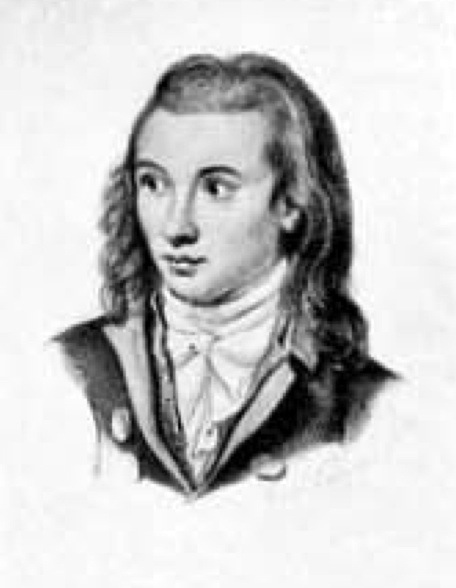
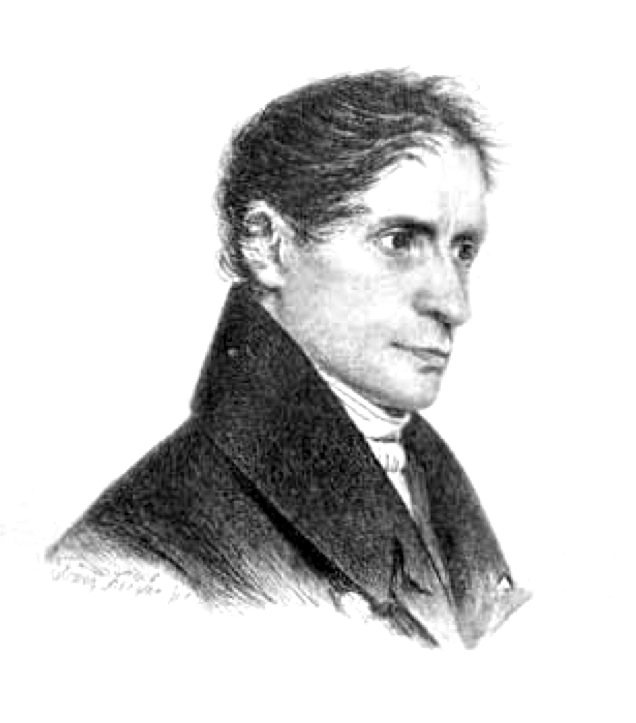
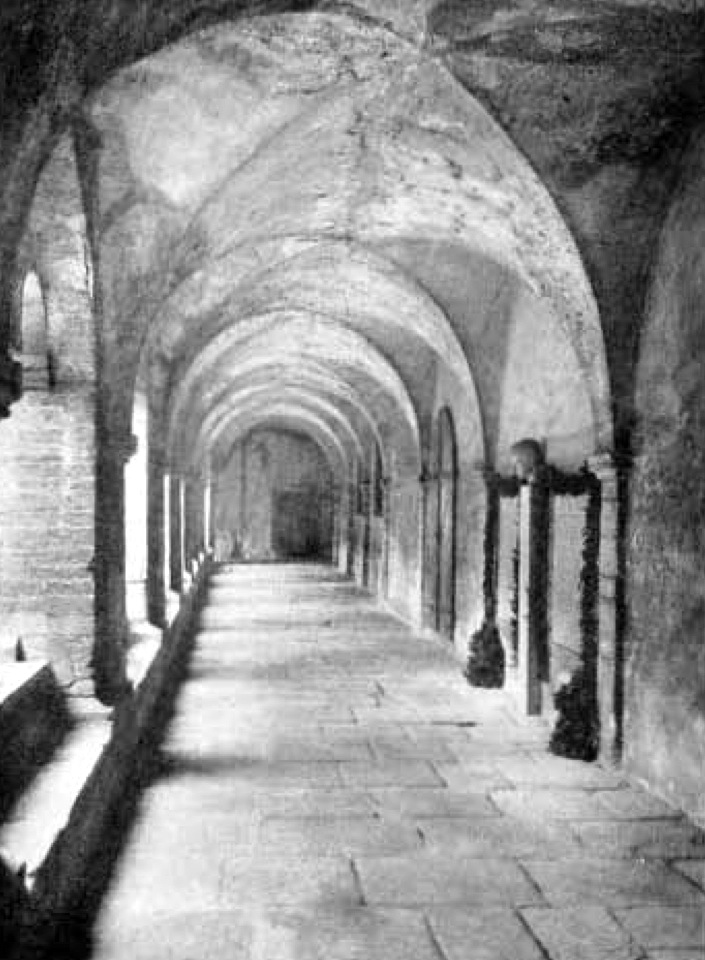

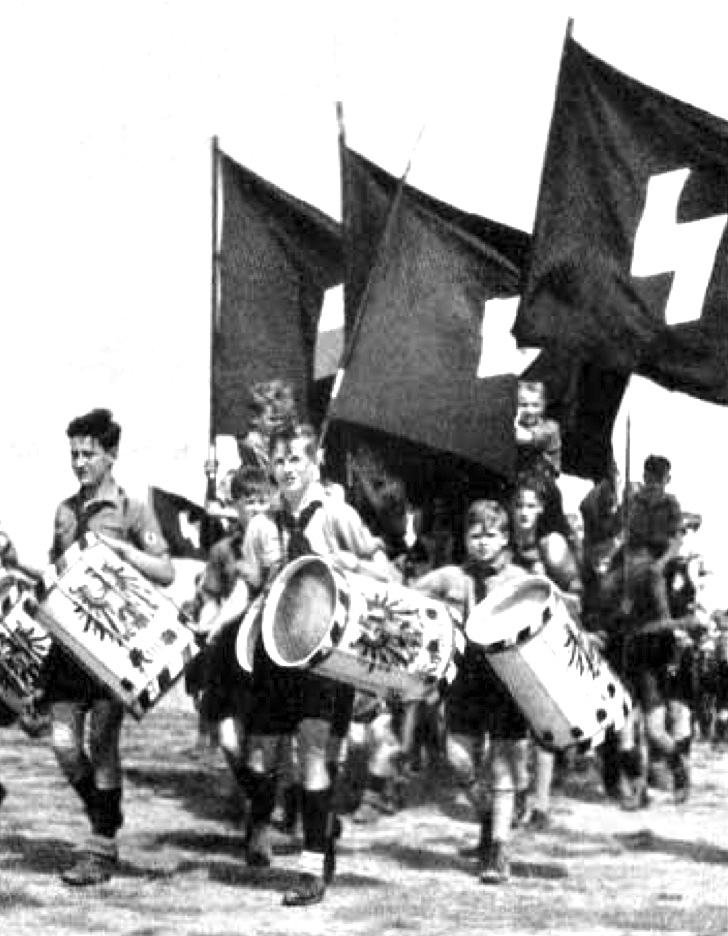
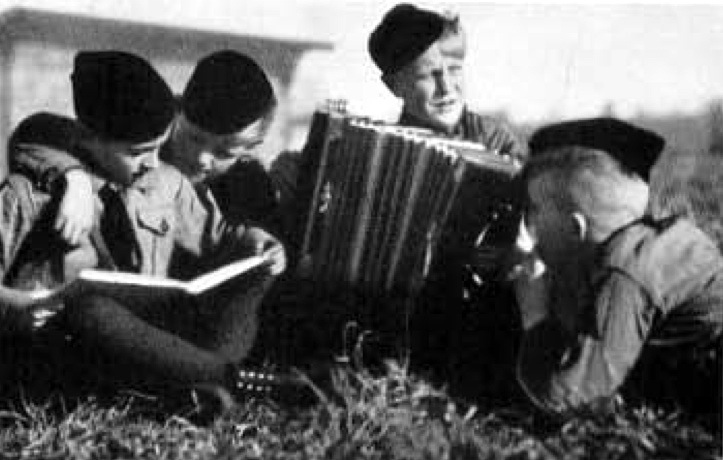

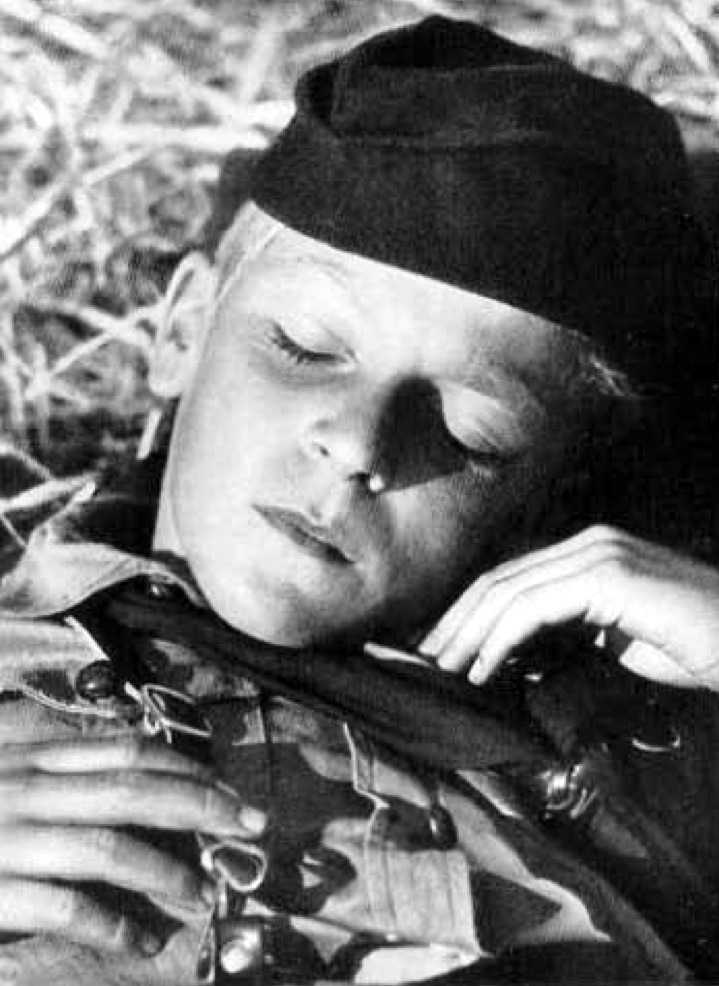
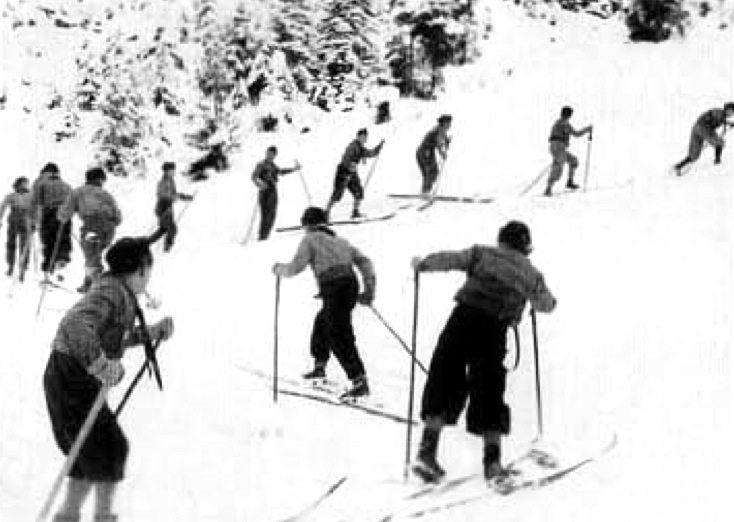

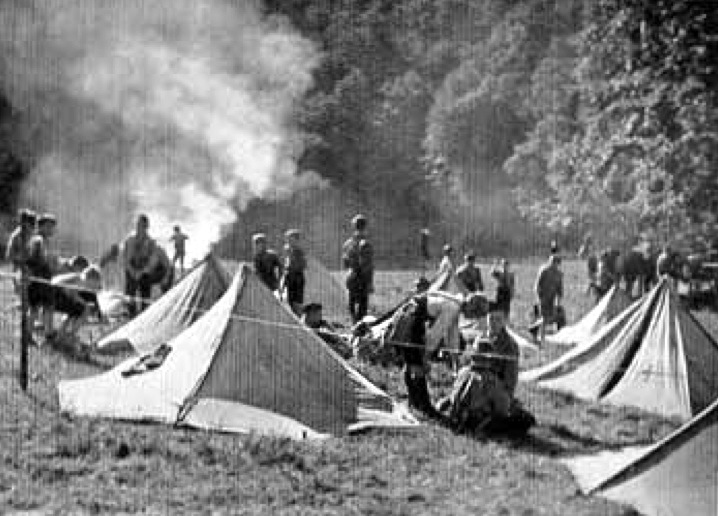
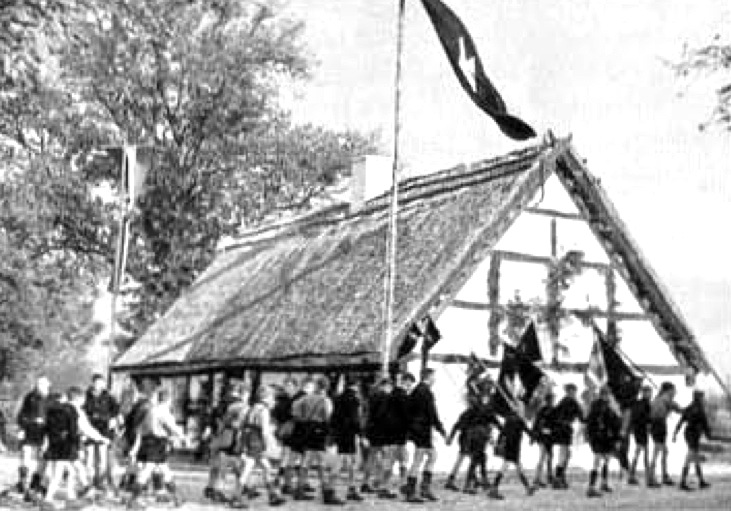
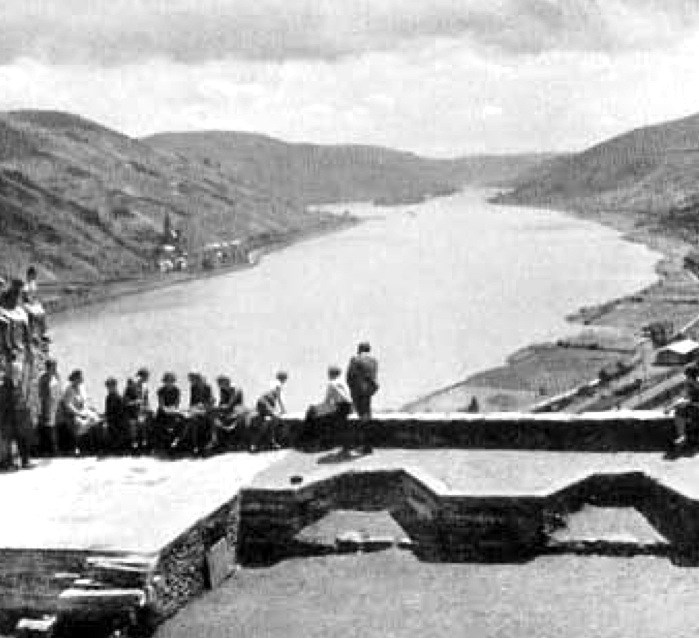


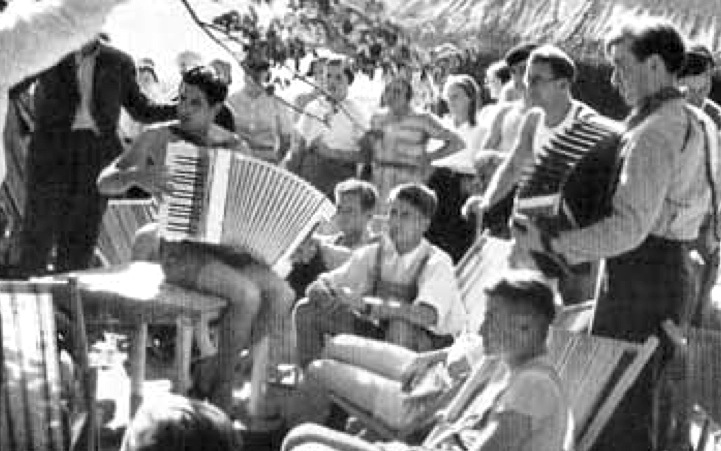
Katana –
I read ‘The History of the 12.SS-Panzerdivision “Hitlerjugend”‘
by Hubert Meyer and H.Harri Henschler (Translator) a few years ago.
They were a tough generation.
I wonder if such sacrifices are possible today?
After reading your post I came across “Wolfhilde’s Hitler Youth Diary 1939-1946” By Wolfhilde von König online.
She was member of the ‘Jungmädelbund’ and later the ‘Bund Deutscher Mädel’
in Munich.
It looks interesting.
Anyway, thank you for your interesting blog and the work you do.
‘Empire of the City’ and ‘Onward Christian Soldiers’ I found particularly interesting.
Thanks for that VATERLAND. I’ll check out those two books.
Onward Christian Soldiers is a great read! I love his honesty and frankness!
Pingback: German Youth in a Changing World - Part 2 (last) - katana17katana17